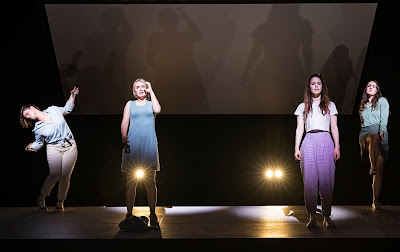Photography and
Art | Brian Rope
Eva
van Gorsel and Manuel Pfeiffer | FACETS…
M16 Artspace Gallery 1 | Until 1 November 2020
Undertaking a lengthy Australian journey, Eva van Gorsel and Manuel Pfeiffer aimed to experience and bring home their impressions of the diverse landscapes they saw. The exhibition is a celebration of that journey.
Van Gorsel is a photographer who uses an extensive range of techniques and approaches to create diverse and interesting imagery. She has a background in environmental sciences and scientific photography, and she loves the outdoors, traveling and hiking. Describing her approach, she says “photography makes me focus on all the beautiful things that exist - in the tiny detail or the grand landscapes. I'd like to capture some of this beauty and share it and maybe it can even help us as a society to better understand and appreciate the environment we live in.”
So,
her works are not documentary but are interpretations of, and connection to,
nature. They are shaped by her vision. One technique used is to combine her own
images, satellite imagery and textures. The major end product is archival
inkjet pigment prints. There is also a book of 100 postcards.
Walking around the gallery, we view the results of van Gorsel’s investigation into how colour palette and geometric features defined the landscapes for her; revealing how life, climate and earth movements have shaped those forms and colours. We also see how she has played with the colours, the shapes, and the perspectives.
The works are arranged in groups revealing elements; most particularly, the facets, colours and textures seen in various places. In the Woomera area the colours are muted. Around Coober Pedy and the Breakaways, they are stronger. At the Devils Marbles they have become bold. Kakadu National Park reveals softer tones, including beautiful gentle greens. Each location has its own colours. Sometimes the colours of particular elements have been modified, emphasising those seen as consistently being part of the particular landscape.
Amongst the most interesting works are those where van Gorsel has introduced other elements to a landscape. For example, floating in the skies over a Coober Pedy landscape we see an opal. At Fowlers Bay, the shape of a whale seen at the Nullarbor Roadhouse has been added.
Use
of Google Earth imagery of the area being explored, adjusting the colours to
create new images, use of the contour lines feature in Photoshop – all are
techniques employed to create excellent works.
I visited this exhibition knowing I would see good images by van Gorsel, whose work I have always admired, but knowing nothing of Pfeiffer’s work. The gallery’s Website promotion of the exhibition features just one of van Gorsel’s works and nothing of his. It only refers to them as artists and I confess to being surprised to learn that he is a visual artist of another kind.
Pfeiffer is a painter who uses an extensive range of materials, including acrylics, pencils, charcoals and much more. His works here are acrylics and mixed media on canvas. He takes inspiration from what he describes as “the ubiquitous beauty of the world surrounding us – from the coast, over the hills to the outback – and from the ‘music’ which is inherent in every place, in everything like a rock or a tree, a waterfall or a dune.”
Nullarbor © Manuel Pfeiffer - picture supplied
His
works complement van Gorsel’s perfectly, revealing the same range of facets.
His colours, shapes and perspectives again explore and reveal.
Pilbara © Manuel Pfeiffer - picture supplied
Together
van Gorsel and Pfeiffer have produced a fine exhibition showing, as intended,
many facets of Australia.



















